- 3 Minutes to read
- Print
- PDF
Sound - What does it all mean?
- 3 Minutes to read
- Print
- PDF
• Sound is measured in decibels (dB) but ratings for sound mitigation – for construction of works to reduce noise through the construction – is rated/classified by Rw ratings.
• The previous standards used a rating system of STC (sound transmission class) and is still used by acoustic engineers for calculations of various works.
• The Rw rating (Sound Reduction index) is used in the current BCA/NCC/Australian standards. It uses slightly different frequency ranges and is seen as an improved method of defining acoustic requirements.
• Many acoustic systems will provide ALL three - dB, STC and Rw – refer Raven door seals, Access panel’s etc literature. Make sure you know what you are looking for.
• Refer statement below to give you an idea of what the scale of the measurements mean – Rw30 and Rw40 are double the noise difference!
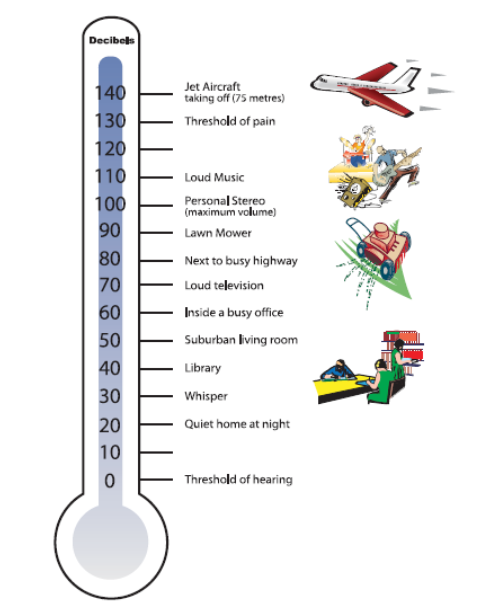
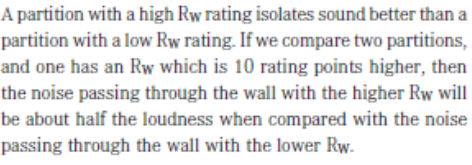
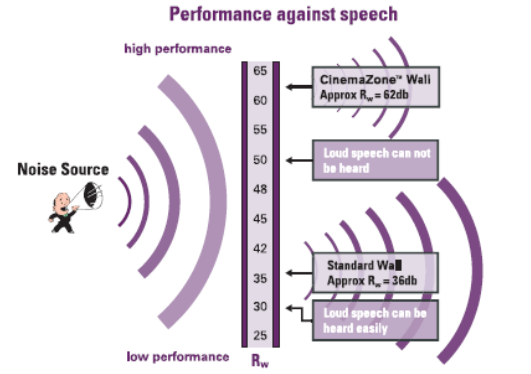
• The main differences are noted on the next page of this policy. To put it bluntly – they are different and you cannot look at the numbers such as an STC 30 and Rw 30 and think you can compare them because they look similar.
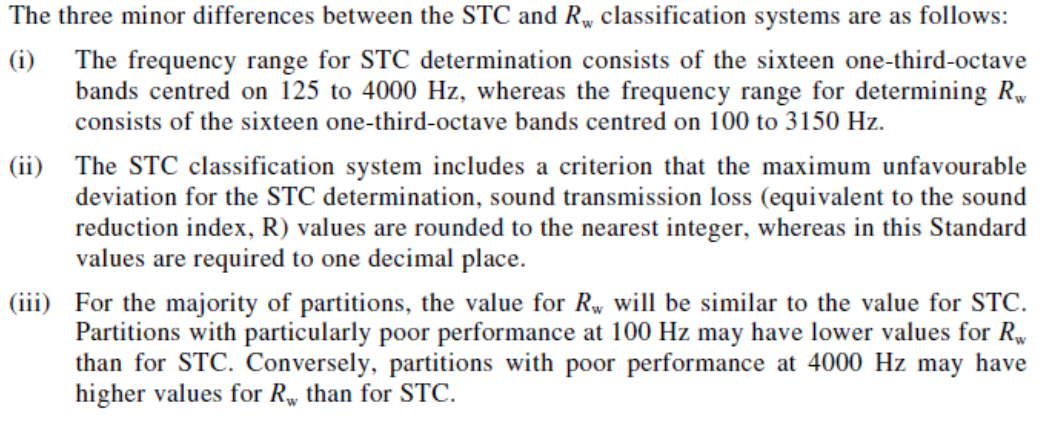
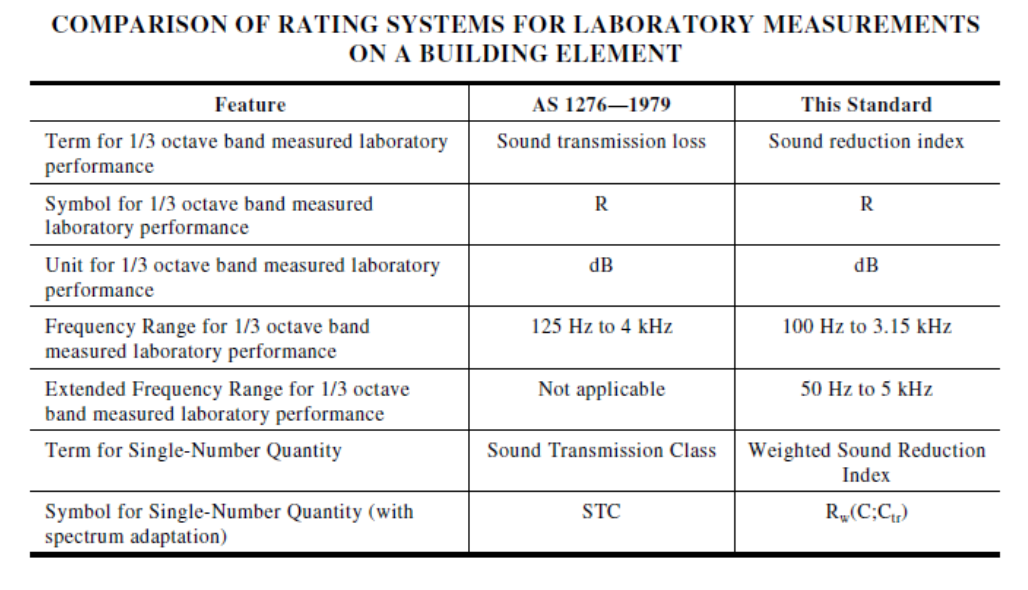
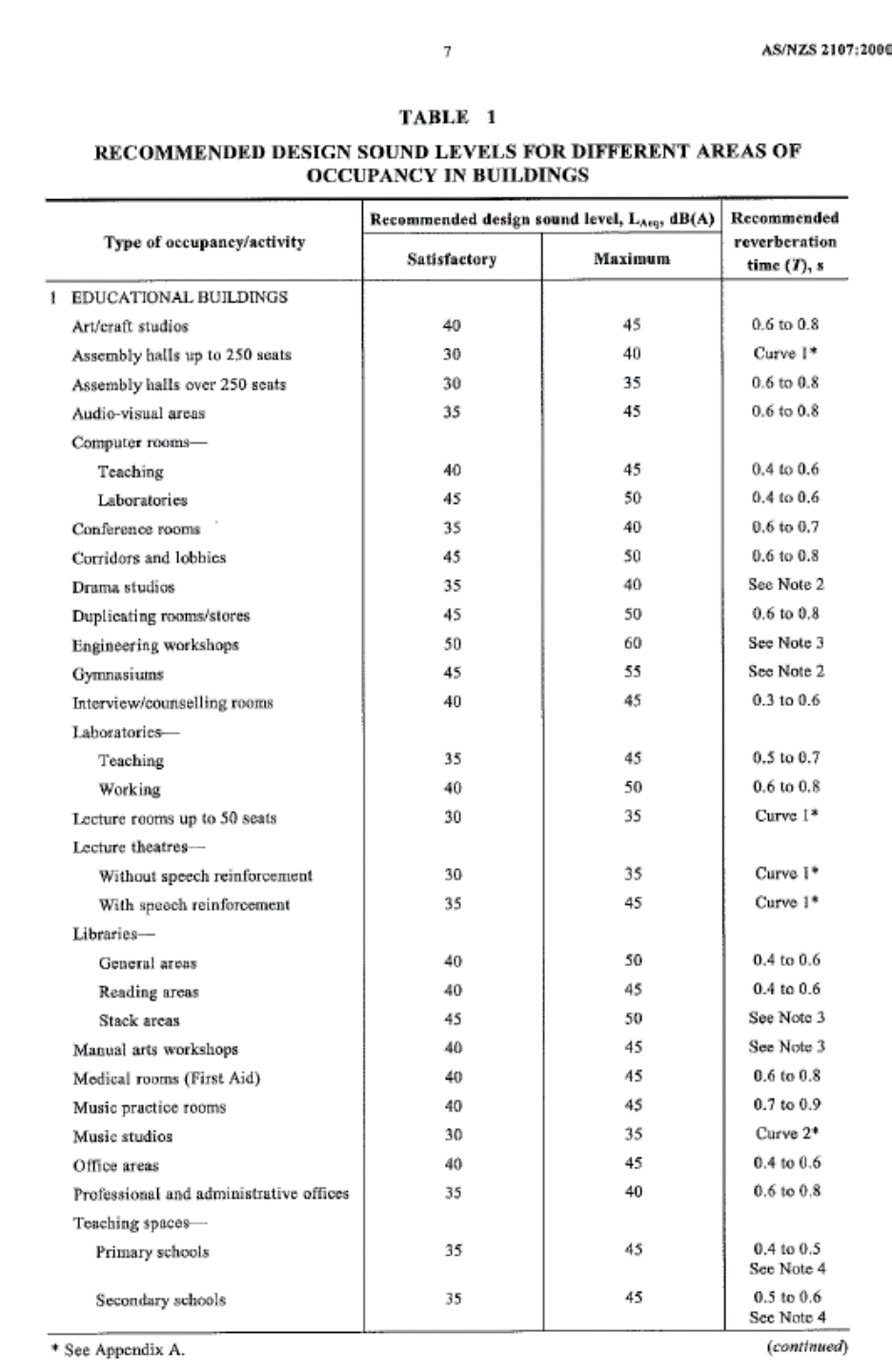
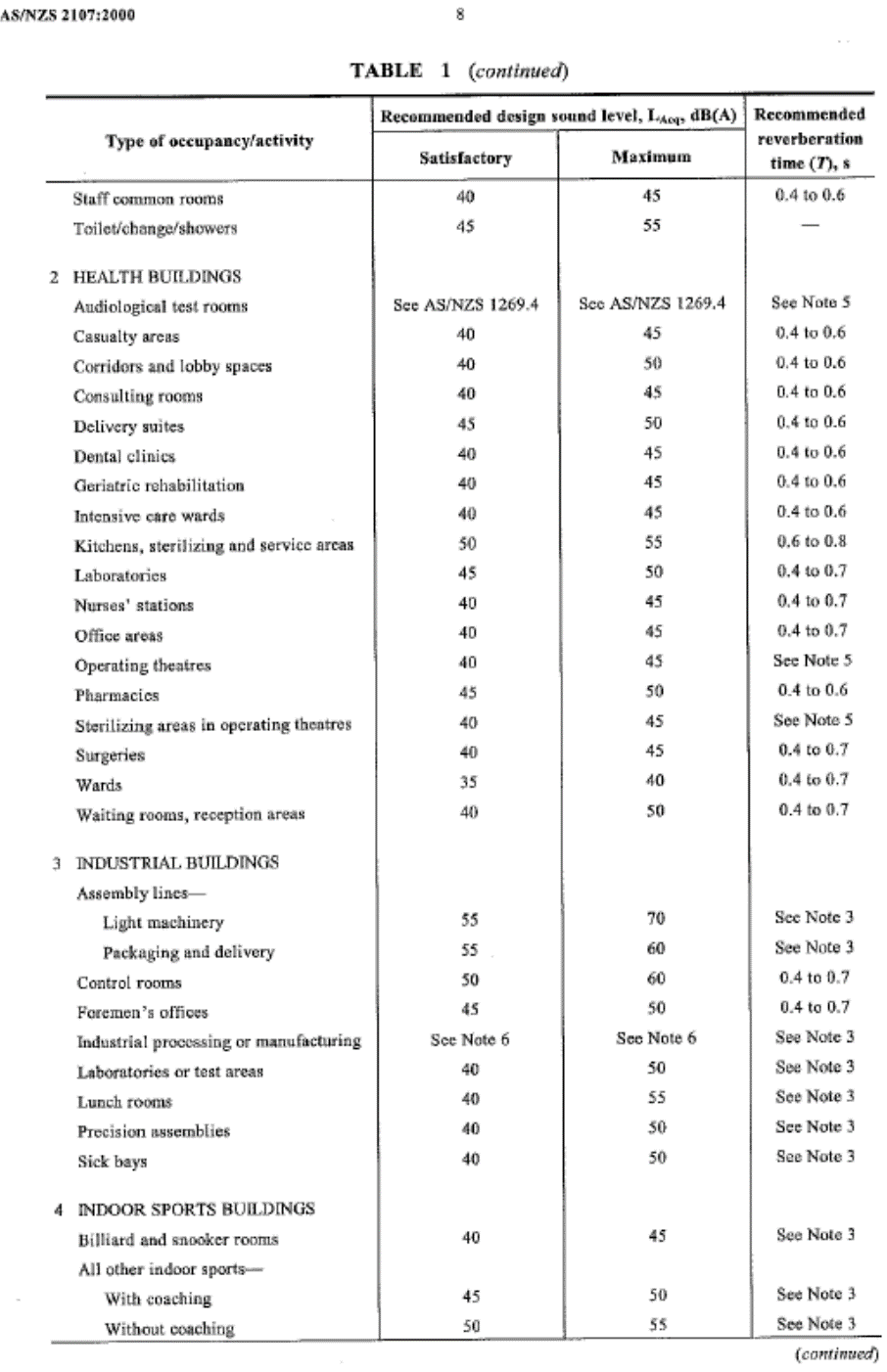
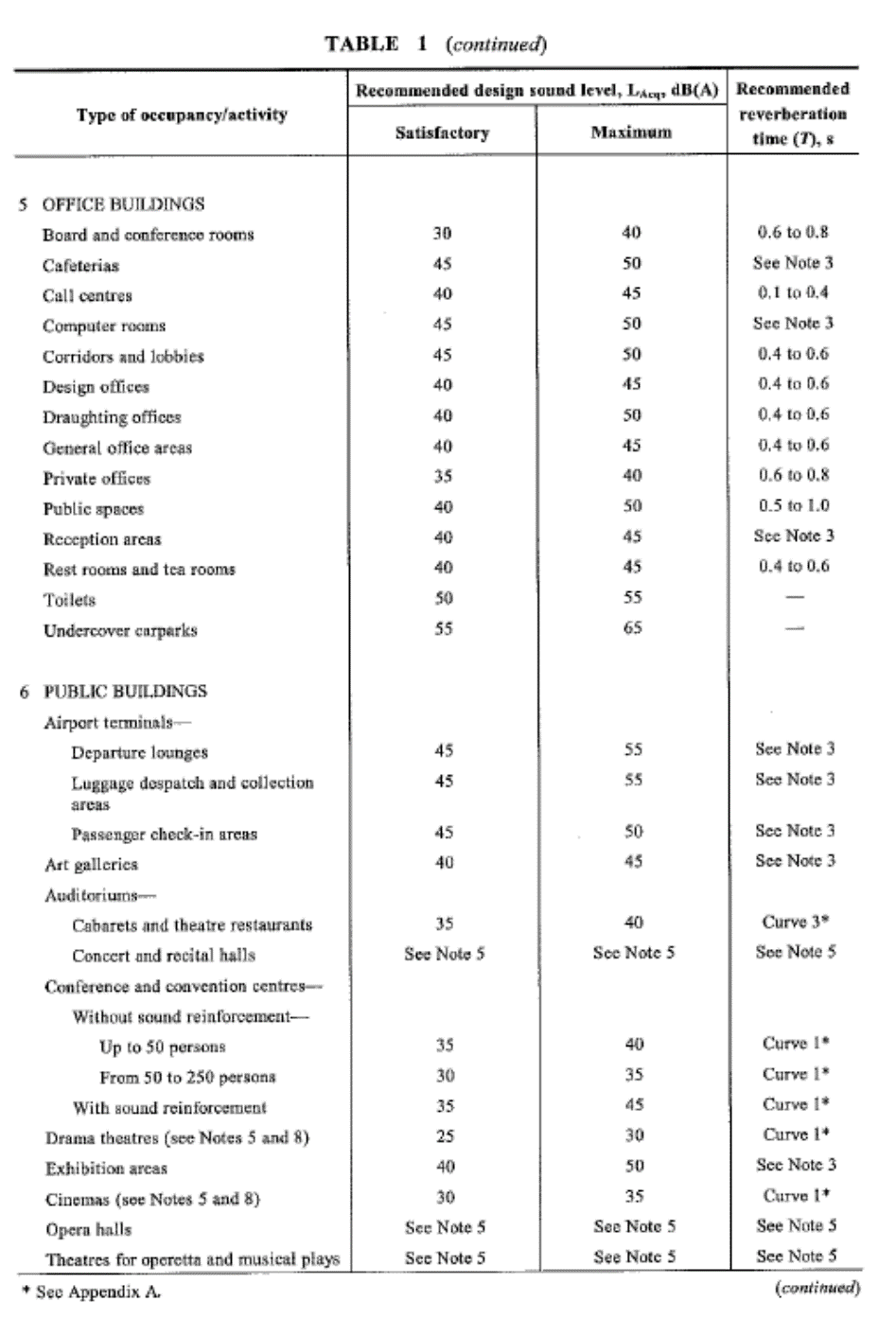
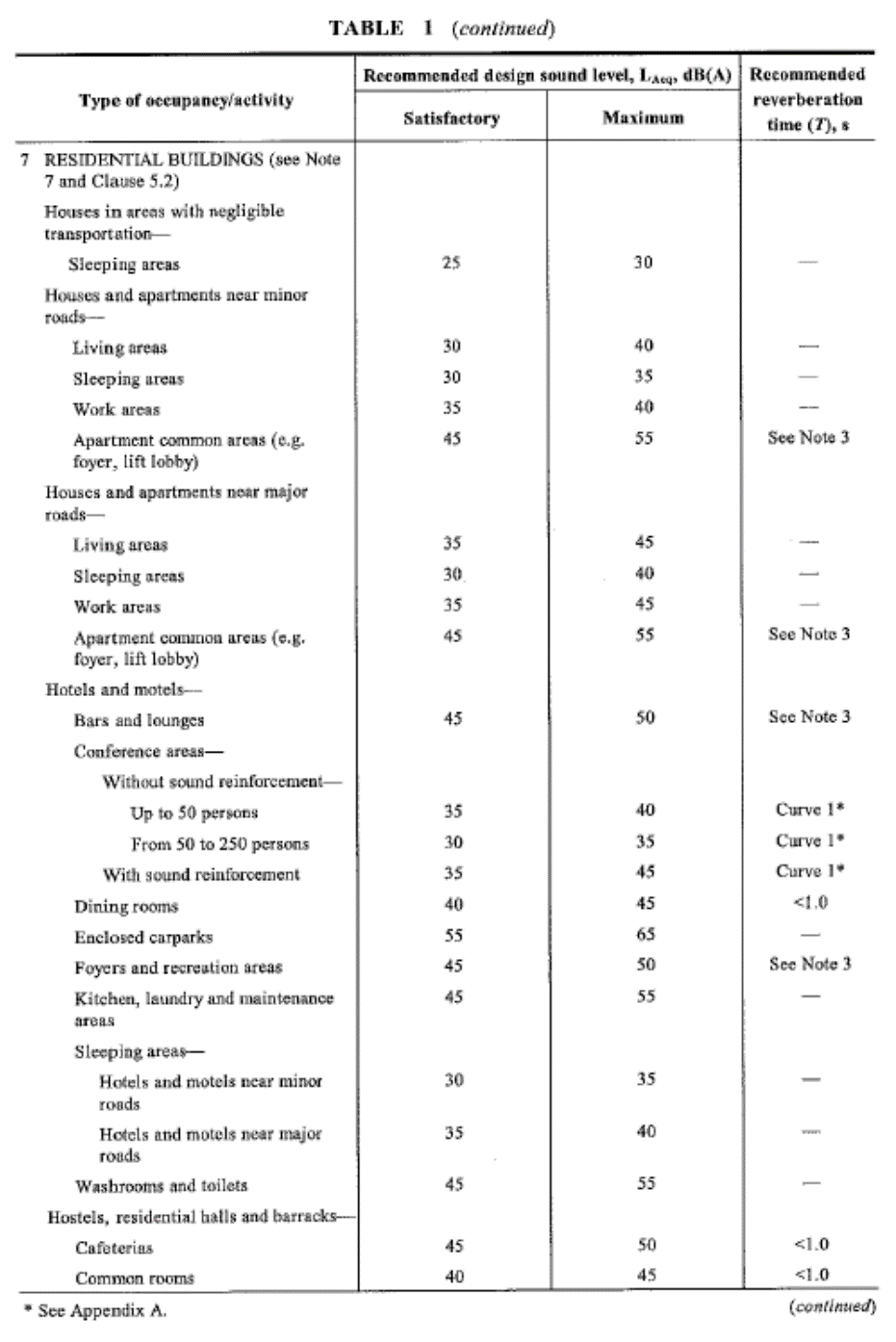
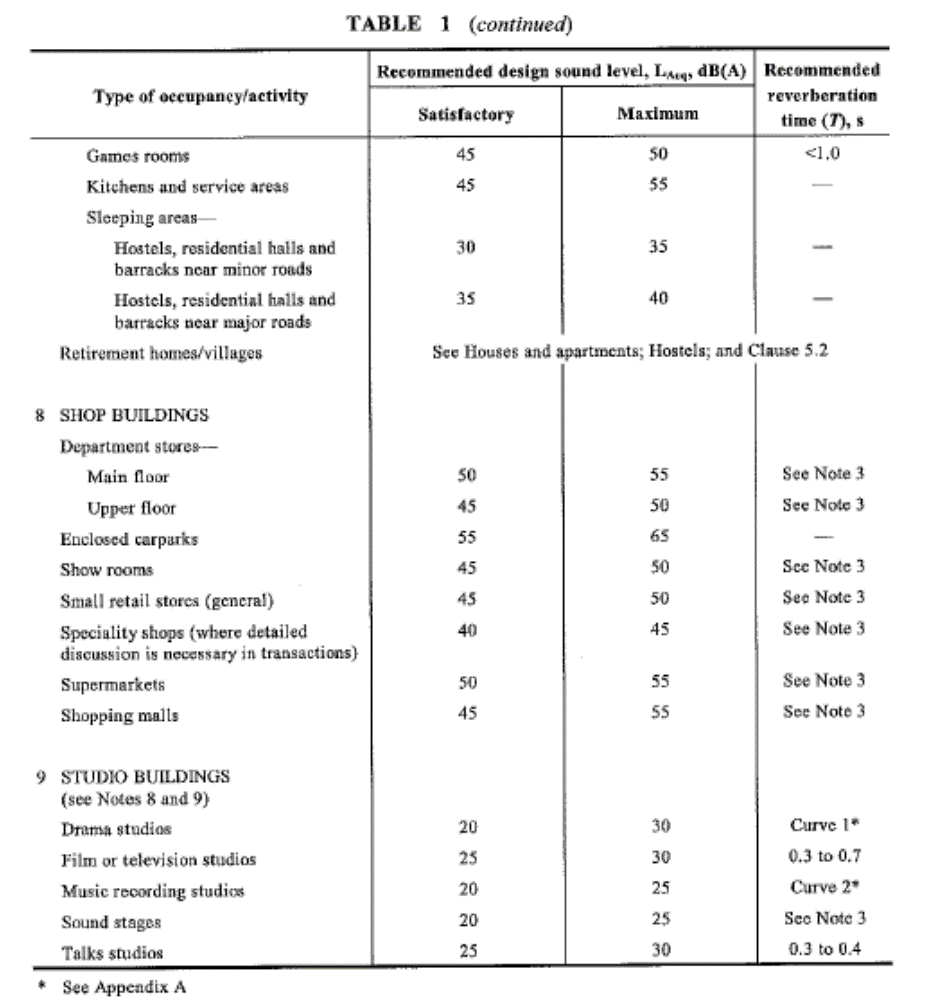
NOTES:
- The recommended design sound levels are for a fully fitted out and completed building. Attention is drawn to the additive noise effect of many machines within the same area and adjacent areas. Allowance for the total number and type of noise sources should therefore be made in the selection of equipment and in the design of building spaces. A building owner or developer may consider an allowance of 3-5 dB(A) to be appropriate.
- Recommended reverberation time is 10 percent to 20 percent higher than Curve 1 of Appendix A.
- Reverberation time should be minimized as far as practicable for noise control.
- Certain teaching spaces, including those intended for students with learning difficulties and students with English as a second language, should have reverberation times at the lower end of the specified range,
- Specialist advice should be sought for these spaces.
- A very wide range of noise levels can occur in the occpied state in spaces housing manufacturing processes, and the levels are primarily subject to control as part of a noise management program (see AS/NZS 1269.2). The possibiliites for segregating very noisy processes from quieter ones by partitioning vary between particular industries and plants. For reasons such as these, it is difficult to make generalised recommendations for desirable, or even maximum, design levels for the unoccupied state, but one guiding principle may still be observed - when the activity in one area of a manufacturing plant is halted it is desirable that the local level should if possible drop to 70 dB(A) or lower to permit speech communication without undue effort.
- In situations where traffic noise levels may vary widely over 24-hour period, measurements to assess compliance with this Standard should be taken at the relevant time and for an appropriate measurement period according to the area of occupancy or activity in the building. Where traffic noise fluctuates rapidy with the passage of individual vehicles, the community reaction may not correlate well with the equivalent continuous noise level as measured.
- the overall sound pressure level in dB(A) should conform to the recommended design sound level given in Table 1. In these spaces, a balanced sound pressure level across the full frequency range is essential. These spaces should therefore be evaluated in octabe bands across the full frequency spectrum. The recommended maximum sound pressure levels for the individual octave bands corresponding to the overall dB(A) value are given in Appendix C.
- In spaces in which high quality sound recordings are to be made, the levels set for low frequency octave bands should not be exceeded (see Appendix C). Subsequent replay of the recordings may cause an amplification of the ambient sound resulting in an overemphasis of its low-frequency components, Specialist advice should always be sought when these spaces are bieng designed. In some circumstances, for purposes of very high quality recording, lower levels than those specified in Table 1 may be required.

